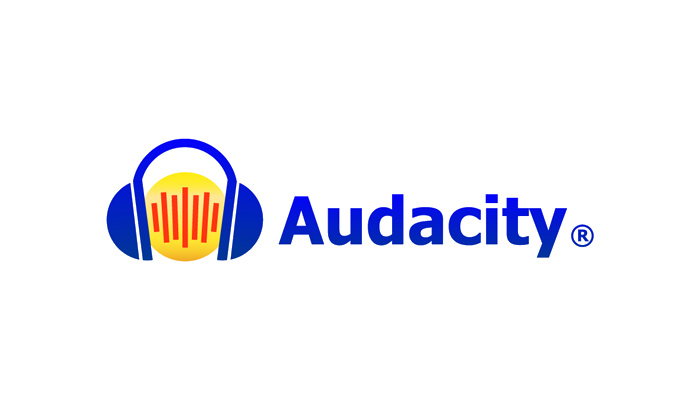Today on Art of the Cut, Oscar-winning editor Tom Cross, ACE, on editing Damien Chazelle’s Babylon.
I’ve been honored to have Tom on Art of the Cut five times before. Previously, we spoke about Joy, Hostiles, La La Land, First Man, and No Time to Die.
Tom was nominated for a BAFTA and ACE Eddie and won the Oscar for Best Achievement in Film Editing for Whiplash. He was nominated for an ACE Eddie for Joy. He was nominated for a BAFTA and an Oscar and won an ACE Eddie for La La Land. He was nominated for a BAFTA and an ACE Eddie for First Man. And he was nominated for an ACE Eddie and won a BAFTA for No Time to Die.
Oscar Winning Editor Tom Cross on Editing Damien Chazelles Babylon
Tom, it's so good to talk to you again.Great to see you, at least virtually.
This is another Damien Chazelle project. Was it good to be back with the two of you guys as collaborators again?I love it. Every Damien [Chazelle] movie I've been lucky to work on has stretched me professionally in so many different ways. Every new one brings great challenges and brings more great movies for me to do. I feel very lucky to get to do them. This is certainly no exception, and this was the biggest, craziest one I think we've ever done together.
How did this one stretch you? What was the challenge in this?This was a stretch in all sorts of different areas. I think I started in July 2021. I was on the movie for over a year. It felt much longer because the movie is so big. There was just so much to do. It started with his script, which was 180 pages. Damien always intended it to be big and epic. Immediately, when I read it, I could tell it was different from what we had done before because Whiplash and La La Land were two-handers. First Man was a one-hander, whereas I could tell from reading the script that this was an ensemble. In that way, there were going to be more story arcs to juggle. That was very exciting to get. I was also very intimidated by it because I've never worked on something that's as much of an ensemble. It was supposed to be about Hollywood and how it transforms all these different characters. And the hope was that the audience would get to experience Hollywood from all these different perspectives. That made it a hardermovie to distill than the others that we've done.
You said that it was a little harder to distill this than other ones. Why do you think that was?Because it's an ensemble film and we had to cover a lot of character ground. Each character has a certain amount of beats. We had to be careful not to shortchange any of them because then you run the risk of losing track of someone or not understanding how one person's story intertwines with another.
There are also a lot of sweeping story changes and plot points. The movie covers several decades. But it's also just the way Damien designed it in terms of tonal and stylistic changes. At the beginning of the movie, our goal was to grab the audience with something explosive, fast, and loud. A lot of it plays as broad comedy. But then we slowly shift the tone and the style. Things start to play darker, and sometimes that would call for a different pace or rhythm.
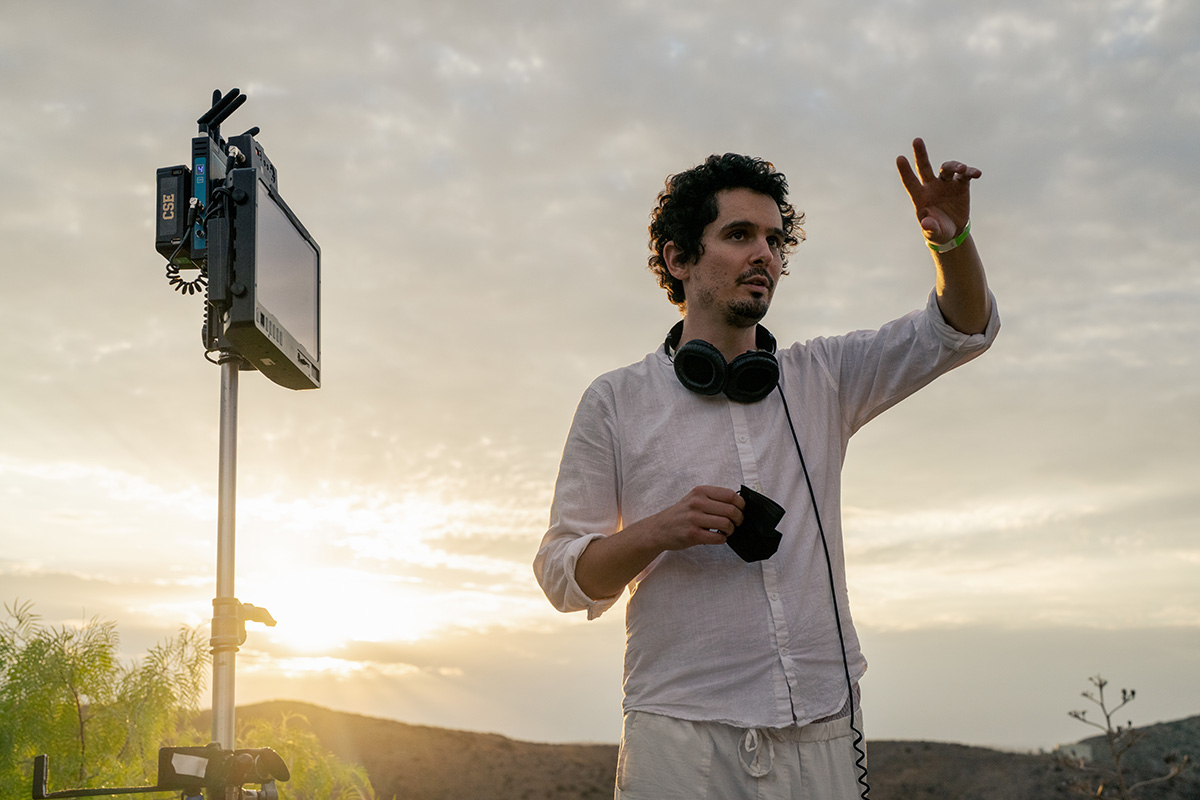 Director Damien Chezelle on set
Director Damien Chezelle on set
It was a fantastic read but also very dense. We lost some stuff, but I feel like with every movie, you lose things. Even right from the beginning with Whiplash, we lost a lot of stuff, and that wasn't a 180-page script.
With this one, I feel like we didn't lose as much as you'd think. Again, Damien always intended it to be a big epic story that would take time to unfold. The first cut that we looked at together was 2 hours and 56 minutes. We were interested in attacking it aggressivelyout of the gate, but that cut ultimately felt too crunched together.
So we went back and reworked it. Our next cut was 3 hours and 30 minutes. After that, we came back down to something like 3 hours and 15 minutes and then 3 hours and 10 minutes…Eventually, we arrived at our current time, which felt like where the movie really wanted to
So, if I'm getting this correct, your first cut was shorter than the final?Yes, the first cut was shorter. I should clarify that I didn't have a traditional assembly completed by the time he came in to cut with me. During shooting, Ryan Chavez chipped in to help me cut and keep up to camera. Even still, I had scenes that were not cut by the time Damien came in to work with me. However, he never likes to look at an assembly all the way through because it's too overwhelming. We usually just dive in and start cutting scenes.
We would cut all week, and then I would take a hard drive home on the weekends to catch up on anything that I hadn't gotten to. In a way, I was laying down the traintrack just ahead of the train.
This is the first film I’ve heard of where it got longer. It makes sense, though. You were cutting it as you went and laying down the railroad tracks. Then when you back up and hop on the train, and you drive down the tracks, you realize it wasn't working for you.It's like you're trying to have your cake and eat it too because you know that a lot of people are going to have feelings about long movies. So you think, "Oh, we should always try to make it short." But it was a great lesson and a reminder that it's not what the movie wants to be.I think Damien said that he thought that the movie would play a minute for each page. It wound up being pretty close to that.
Damien always wanted the film to have a coked-up and frenetic pace. He didn'twant it to feel polite or like a typical 1920s-period piece. It was okay to give the impression of the time period, but he didn't want it to be so literal or stuck in a certain time. He wanted to shatter the audience's preconceived notions of what a period piece would be. He wanted it to feel like The Wolf of Wall Street and Whiplash.
 Jovan Adepo in Babylon (2022)
Jovan Adepo in Babylon (2022)
Yes. It was very liberating to know that we didn't have to be chained to certain rules. But what was interesting about this movie is Damien has — I guess like he always has — very specific things in mind for certain sections and scenes, but he really is about reinventing, reworking, or rewriting in the editing room. He doesn't fall in love with his own words. He doesn't fall in love with his own concepts.
I've probably talked about it before, but he is such a great editing collaborator because when you want to try something or you pitch an idea to cheat something, he wants the cheat to work as much as you do. I've worked with some directors, who might be really great storytellers, but they're very quick to say, "That's never going to work."
It may just be that Damien and I are both crazy in the same way, or both of our ideas are nuts, but we're sort of nuts on the same page.
At the beginning of the movie, you've got Margot Robbie's character, Nellie LaRoy, and she's in this movie called Maids Off that they're shooting. Talk a little bit about the intercutting of shooting the movie and when she goes to see herself in the movie. Was it written that way? It seems like that would be a place where you could collapse a little bit.Yeah, definitely. A big inspiration for that section was the parallel editing from the D.W. Griffith film Intolerance. We had all the storylines — drunk Jack Conrad dictating in his tent, Nellie dancing on the bar, and Manny racing to the camera rental house. It was fun to intercut them and find areas to punctuate with these great inserts — typewriter keys, shot glasses, gear shifting — andglue it all together with Justin Hurwitz'smusic.
You mentioned some other black-and-white films and silent movie directors. How much research did you do into that era?While we were wrapping up First Man and taking it to festivals, Damien told me about a book he was reading, which I believe was called "The Speed of Sound." It was a book about the technical transition from silent films to sound.
I remember when I started reading the book, I noticed that it wouldmention certain
silent films as blockbusters and certain actors as huge money-making movie stars. Then I realized that I hadn't heard ofany of them, and I consider myself fairly well-read on the topic. Therewas something very humbling about that, realizing that a movie could be popular and celebrated during its day and then completely forgotten the next.
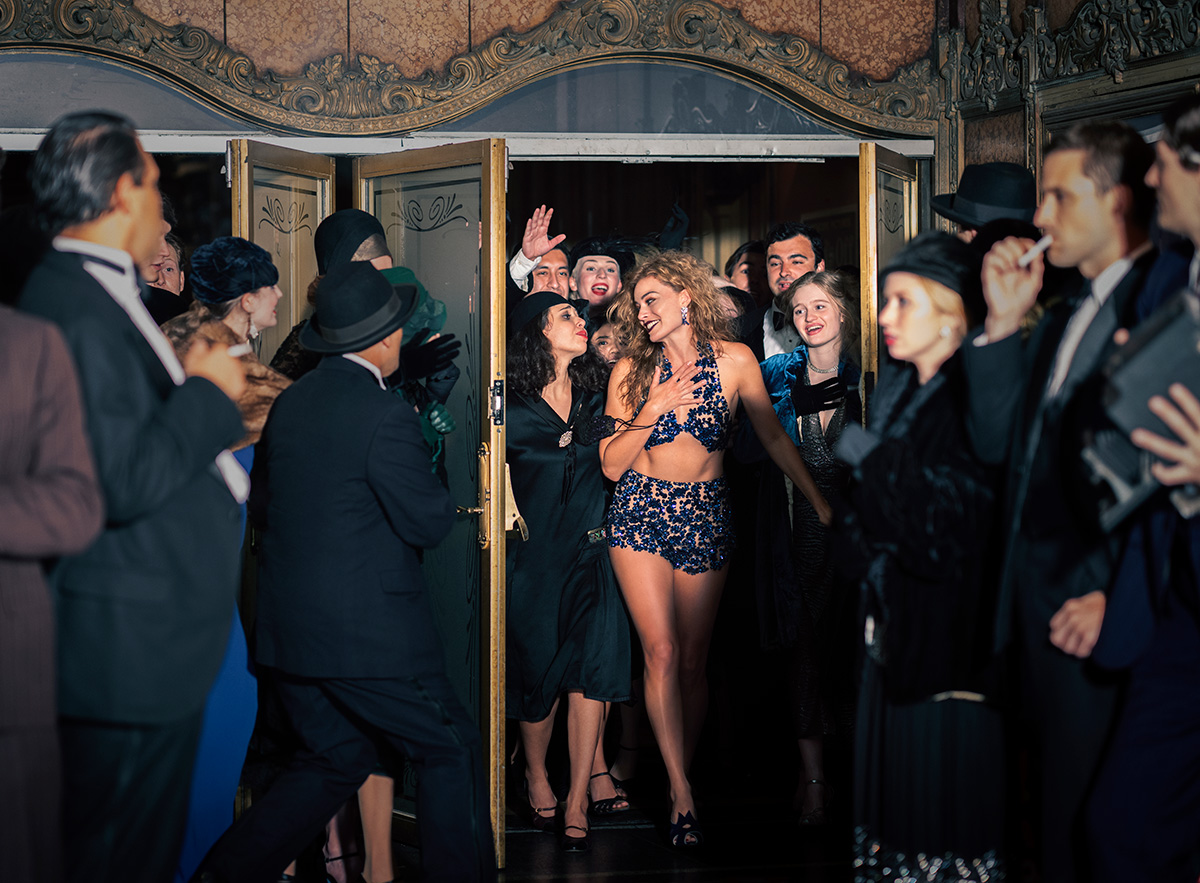 Margot Robbie in Babylon (2022)
Margot Robbie in Babylon (2022)
That's true. I'm comfortable straddling both thoughts, which is that, yes, on one hand, it's a cycle of death and rebirth. Everyone's disposable. Everyone gets replaced by the new version of themselves. At the same time, our only hope for cinematic immortality is to do the work and then have a kid in 50 years thread up the film. Then it comes to life again. It cuts both ways.
Displaying the title of the film is deep into the film. Can you talk about why it's structured like that? Was there a clock ticking in your head saying, "We've gotta get to it," or does it not matter?There was absolutely a clock ticking, but the title was always designed to hit when it did. Damien's idea was that this opening would be maximalist and that this intro would be so outsized that when the title comes up after 30 minutes, it would show you the scale in terms of how epic the movie was going to be.
Damien wanted Babylon to be maximalist. His vision for the opening pre-title sequence was in keeping with that. He would joke with me that this might be the last time we get to do a movie like this, so let's just go for it. Get it all up on the screen. Everything.
After the title, there's a series of these little slices of life of the characters. I want to talk about determining how long those were. Were there any others? And, again, that clock of how much do we need to set up the audience caring for these people and knowing them and how much do we need to get onto the movie set?Right. I think that was something that was always intended to go with a certain score and certain music underneath. After the loud and maniacal musical sting on the title, we show our characters at their homes the morning after. It was important to show that all these characters who went to the same wild party live and come from very different places. And for the most part, they come from very little. Each character had moments that originally played out a little more in real-time, but we abbreviated it and let it float on Justin Hurwitz's music. In contrast with what came before the title, here, his music is very gentle and measured. I found it very beautiful to see with the music because it gave each character some dignity and warmth.
I remember playing with the length of each character and then giving it to Justin to adjust. We continued a work process with Justin that we established on La La Land and First Man. Damien and I would cut picture and do rough music edits and then pass the sequence to Justin, who was working in the room next to mine. He would then fix my music edits and further improve as he saw fit. Then it would come back to me. I would usually need to adjust picture again. On Babylon, thisback-and-forth — our rinse and repeat cycles — was more abundant and more frequent than on past movies.
 Courtesy of Sharia Lynn Davis: L-R, VFX Editor Michael Nouryeh, Assistant Editor Sharia Lynn Davis, Assistant Editor Phillip Trujillo, Additional Editor Ryan Chavez, Editor Tom Cross, Assistant Editor Ben Grimm-Wilson
Courtesy of Sharia Lynn Davis: L-R, VFX Editor Michael Nouryeh, Assistant Editor Sharia Lynn Davis, Assistant Editor Phillip Trujillo, Additional Editor Ryan Chavez, Editor Tom Cross, Assistant Editor Ben Grimm-Wilson
Absolutely.I had Justin's music from day one. I worked with it right away. Damien and Justin work on melodies and score ideas way before pre-production. By the time I start getting dailies, I already have rough digital demos of Justin's score to work with. On other films, it makes sense to just cut the picture and let that dictate the rhythm. Then music follows that. On Babylon, I already had the music, so that would inform the rhythm very directly. On this film, a lot of the picture cutting is braided together with the music.
There’s intercutting between three storylines: 1) the first movie dance of Margot Robbie's character, 2) Brad Pitt's character, Jack Conrad, in a basecamp tent, and 3) the camera store run to pick up a new camera. Can you talk about how close that was to the script and what things you were finding worked by juxtaposing things?That sequence was very close to the essence of what Damien had planned. He is very detailed and precise in hispre-planning. However, some of the footage, like the truck driving, was more abundant and open to selecting. As we were working, we would find our favorite pieces together and just adjust the sequence to accommodate.
There were moments that were very precisely designed by Damien to build with the music. One such moment was the music rising as Nellie flashes one of the men in the bar just as Manny slams on his brakes to avoid crashing. But before that moment, we would elongate or shorten the music as needed. The moments of Nellie dancing usually required more music looping because she often had more beats to hit as opposed to Manny driving, which often appeared as quick fragments. We would make music edits in the Avid as we went along and then pass the picture and those edits over to Justin for him to perfect.
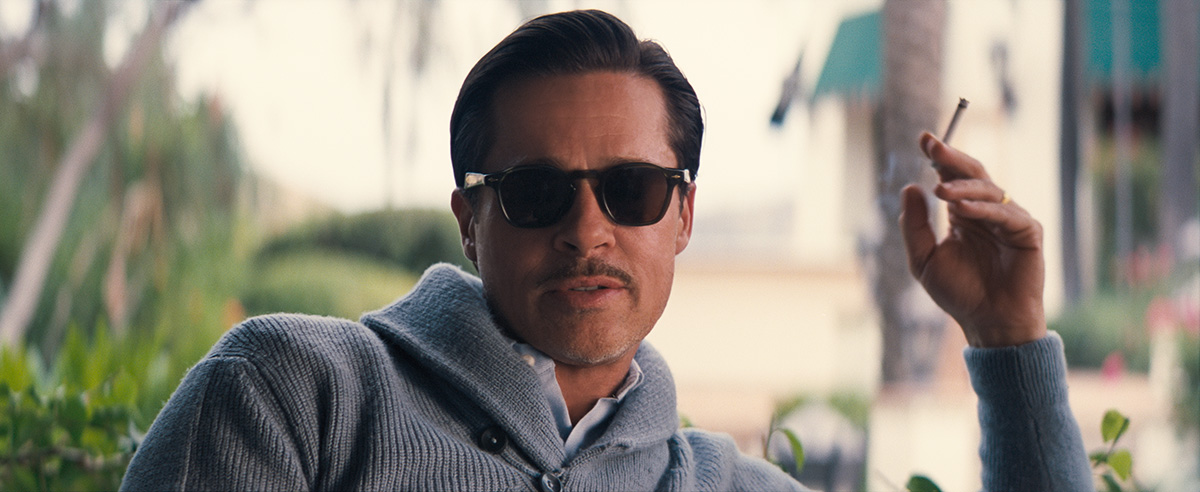 Brad Pittin Babylon (2022)
Brad Pittin Babylon (2022)
I have to give credit to Damien because he is someone — more than anyone else I've worked with — who's taught me the power of repetition.
I think, as editors, we often try to keep things from getting stale. We change up the coverage or the shot sizes to keep it fresh and to keep the geography alive. We try to give the illusion that we're not going back to the same thing again and again. In the case of this scene, Damien wanted to go in the opposite direction and lean into repetition. We would refer to Nellie's first sound take as the Whiplash sequence. The challenge was very similar. On Whiplash, Damien wanted band practice to feel like a war movie. On Babylon, the challenge was to make the sound of silence or someone sneezing feel like life and death.
Beyond setting up this new environment, Damien knew that creating the suspense was going to come down to our performances and the editing.
The idea was to establish a new style that was completely different from what came before. Before The Jazz Singer scene, we could rely on the music-driven high-energy cutting to support the cacophony of the wild west days. After the transition to sound, we tried to reset and show that filming a movie had become ordered, static, and above all else, quiet.
Damien shot all these great details that were important for us to use. The red light and buzzer. The slate boy coming in. The director cueing the action by waving her hand. The door open. Nellie's feet walking. The suitcase hitting the floor. Assembling those elements into a little sequence created apreamble that we could use to precede every take. The idea was to create a grammar that you would repeat every time. And the hope was that we could play with the audience's expectations through this repetition. Each time, you're wondering if you're going to see the same thing as before or if it will be different this time. Revel in the repetition. Don't let the audience off the hook. Keep the same cutting pattern to create discomfort and unease. How long can Nellie do this?And with each subsequent take, we started cutting it faster and faster, which we could do because, by this point. You have a shorthand with the audience. But by speeding it up, you're also creating momentum, and the hope is that the audience starts to feel more and more urgency. You want the heartbeat of the audience to start synchronizing with the rhythm of the cutting. All the while, you try to create this sensation that we're all on some sort of mechanical march toward doom.
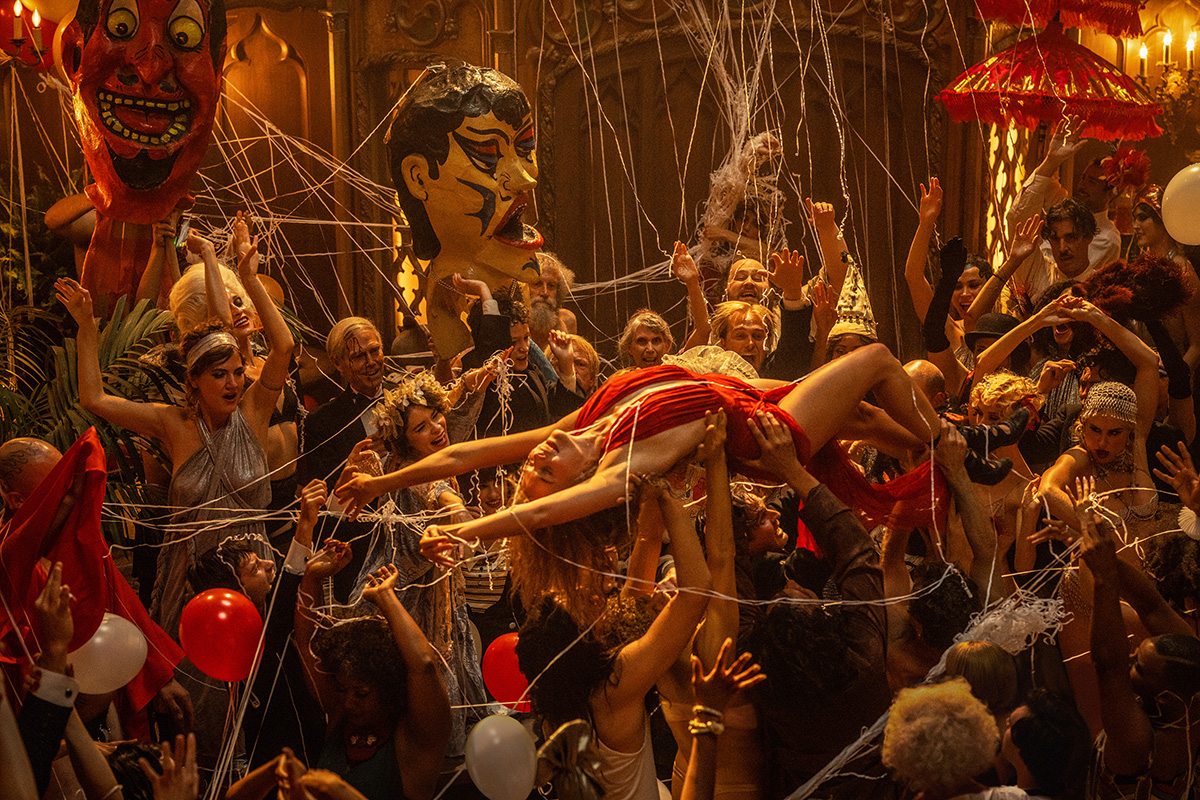 Margot Robbie in Babylon (2022)
Margot Robbie in Babylon (2022)
I don't remember going tighter and tighter on it. I do remember — and this is the way Damien shot it — that it had a certain static and locked-down feeling in the beginning. And then it starts to get looser and looser as time goes on. So when someone sneezes, what started as a static tableau instantly goes handheld and rough as the AD rushes into frame to chastise the crew. By the time we get to the scuffle with the sound guy and Nellie, that's when all hell breaks loose. We go handheld and wild.
The film is about this wild time in Hollywood and is often filled with chaos and great jazz music, but there were very deliberate moments of silence. Can you talk about choosing those quiet times, their purpose, and how you got in and out of them?I think what I find powerful about Damien as a storyteller is that he believes in stylistic
contrast. If he wants something to be loud, he knows that it will feel louder if it's bookended by silence. I think that you can look at Babylon across the board in terms of its style and find different peaks and valleys.
When we're at Jack's party, it's loud and boisterous and gets even louder when Nellie storms out of the bathroom and yells about her dad fighting a snake. The music of the band is playing. Tt rises to a final downbeat, which then cuts to complete silence as we cut to the next scene, which shows a wide of cars driving in the desert. Damien loves to do these types of resets because he knows that we're about to get into a very loud scene — the snake fight — and the audience needs a break.
Another important quiet moment is in the movie theater when Nellie is watching herself on screen. We played it completely silently until the audience around her starts to react. In reality, there probably would have been some sort of piano or Wurlitzer accompaniment to the film playing. But the reaction and applause from the audience felt more pronounced coming out of silence. Also, we were just coming out of a music-driven montage before the theater. We knew that we were about to go into a new montage after Nellie comes out. So it felt right to reset.
Absolutely. You mentioned that one of the reasons the film needed to breathe and expand was because of these big tonal shifts. Can you talk about those tonal shifts and orchestrating the transitions between them?It's very interesting because we really had to keep track of where the characters are at. All our characters have their own arcs. Some of them are wild swings. Manny starts the film as a very different person from the person he becomes by the end. You need a certain amount of real estate to be able to show that or have the audience experience that.
The opening of the film lent itself to abbreviation. It's music-driven. You have a foundation and carpet of music that you can throw your picture onto. When Manny drives Jack home the morning after, we cut most of it in a way that was impressionist, like skipping stones across a pond. We slowed down long enoughfor him to give his speech on the balcony and then pushed the pace again after he falls into the pool. At that point, being more percussive in the cutting helps the story. After the transition to sound, things become more serious. Many scenes demanded more nuance and naturalism, so we would try to pull back on the style and play more classically, like the dialogue scene with Jack confronting Elinor.
In a way, we were telling our story with different styles. You need a little breathing space so you can ease into the style changes, and it doesn't feel so abrupt. After the rollercoaster of Manny experiencing The Jazz Singer in the movie theater, we open on the empty soundstage with a very long fade-in and then follow it with a very measured, slow series of static establishing shots to reset the storytelling and give the audience space to adjust.
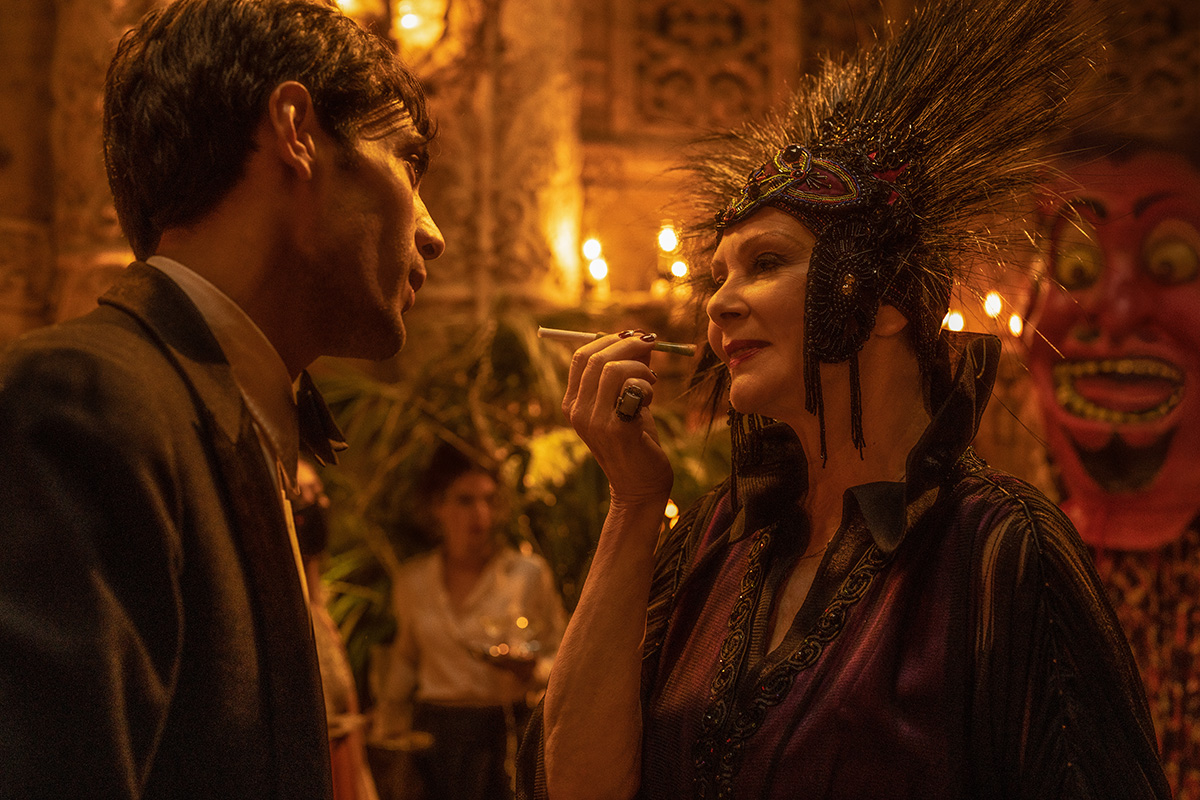 Jean Smart and Diego Calva in Babylon (2022)
Jean Smart and Diego Calva in Babylon (2022)
Damien wanted to try that. The scene was covered traditionally, so we also had Elinor's side of the scene, which was beautifully performed by Jean Smart. That scene wasn't a lot longer, but it did have other little scripted moments if I remember correctly. It was originally shot and intended to play more in real-time. I don't remember when Damien had the idea to jump it. But it was a way to abbreviate what was being said but then also turn it into a stylistic thing.
I totally agree that when you set a style at the beginning of the movie, it tends to be the owner's manual for the audience. You want to introduce your style early and have it grow from there. You usually don't want to do anything overt later because you've taught the audience how to understand your movie. You're potentially doing them a disservice by presenting something in a cinematic language that they don't understand. All that being said, I feel like these types of jump cuts have been part of the language of movies and TV for a long time. We felt pretty sure that the audience could just go with it. Our hope was that the end result would make it more impressionistic. We tried to lean into it and own it. We didn't try to hide it.
Because you could've hidden it if you wanted to.Absolutely. We could have found some ways to cover it. In fact, we did do some speed ramps and morphs to adjust performance, but it was important that the jump cuts as a stylistic device remained. At this point in the story, it felt right to play it on Jack's face and make the focus all about that. Somehow, it made the voice offscreen feel more judgemental. It felt more like our character was really in the hot seat. It's unflinching until each jump cut happens.
I love it. I could talk about editing with you all day long.With you, Steve, I could go on forever. We talk editor talk. Great chatting with you.
Great chatting with you too. Bye, Tom.